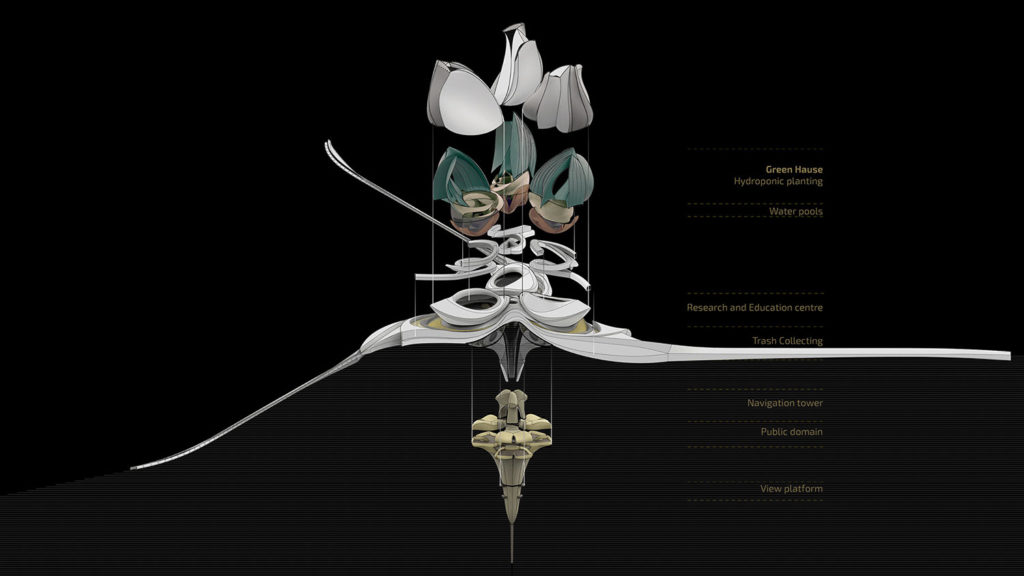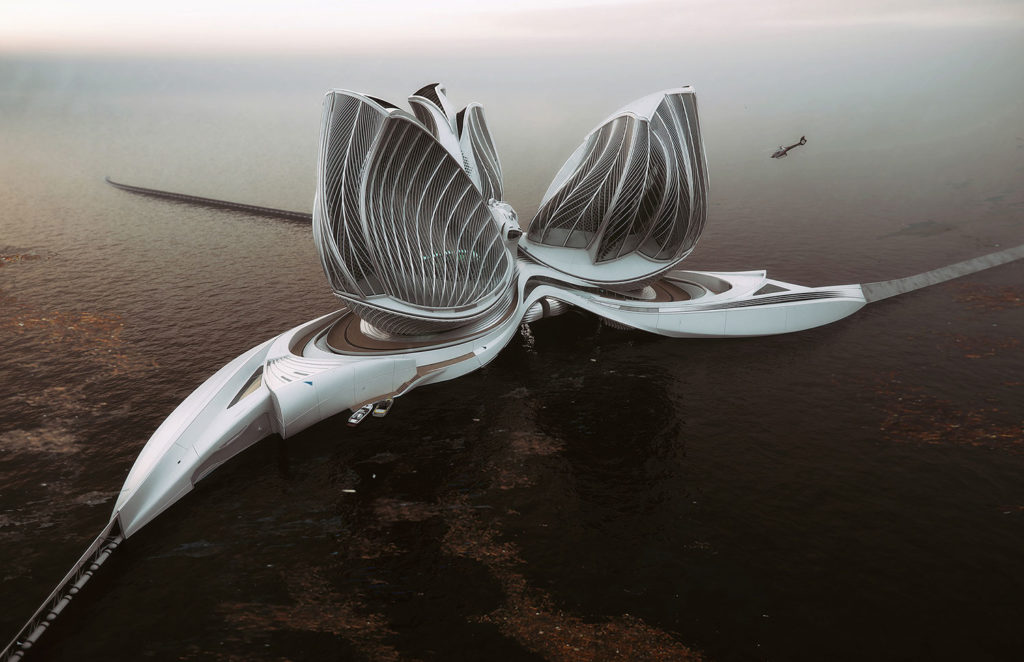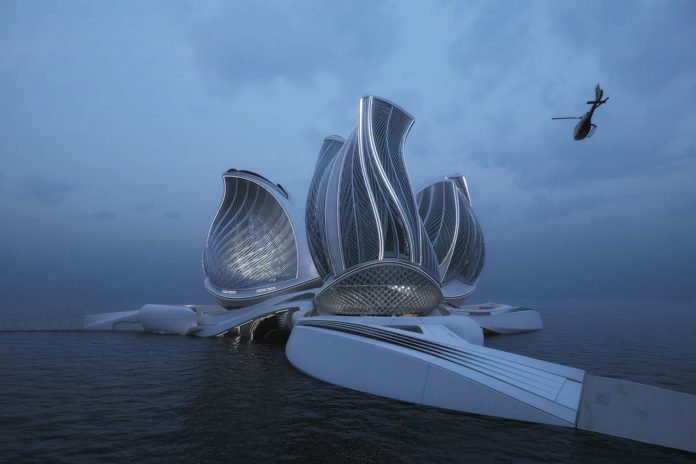The designer Lenka Petráková has proposed a way to solve one of the world’s biggest pollution problems: ocean waste. She has designed an award-winning concept, called the ‘8th Continent’, which consists of a floating station that collects plastic debris from the water’s surface and breaks it down into recyclable material.
The project recently won the Jacques Rougerie foundation’s 2020 Grand Prix Award for Architecture and Innovation.

Designed to float on the Great Pacific Garbage Patch, the 8th Continent is composed of five main parts:
- The Barrier that serves to collect waste and harvest tidal energy
- The Collector, where waste is sorted, biodegraded, and stored
- The Research and Education Centre to study and showcase the increasingly troubling side of aquatic environments
- Greenhouses where plants are grown and water is desalinated
- Living Quarters with support facilities

Each of the five parts of the structure is adapted to its function. The Barrier floats on the water surface and moves waste towards the Collector. The research and education center is linked to the Collector and greenhouses to track and study water processes. Greenhouses are shaped to optimize the collection of condensed water and resemble large sails to allow wind to navigate the station. The Barrier also collects tidal energy, which powers the turbine to collect the waste.
The “Continent” moves according to its position, internal environment, and ocean movements. The floating station is self-contained, so its components must work together to optimize the power source. The greenhouse is covered with solar panels, which ensure there is enough power for the water reservoirs’ heating, allowing the evaporation of water and its desalination. After the wastewater is extracted, the filtered, clean water is pumped into the water tank or desalinated and used for the hydrophobic cultivation of plants in the facility.
“The live-giving ocean is suffering, and we need to help restore its balance for our planet’s survival,” said Lenka Petráková. “We can not achieve it only by technology, but we need an interdisciplinary platform to educate people and change their relationship with the marine environment for the generations to come.“
